Before sugary cereals and drive-through breakfast sandwiches, American families started their mornings with hearty, practical meals that often used leftovers or simple ingredients. Many of these traditional breakfast dishes have completely vanished from modern tables, replaced by convenience foods and changing tastes. Our grandparents and great-grandparents relied on these filling, economical meals to fuel long days of physical work. Today, these forgotten breakfast classics tell fascinating stories about American history, regional traditions, and how families made the most of what they had.
1. Creamed Chipped Beef on Toast (S.O.S.)

Military families knew this dish well, though soldiers had a different nickname for it that we can’t print here. The official name “S.O.S.” stood for “same old stuff,” but it became a beloved comfort food during the Great Depression.
Dried beef got transformed into something special with a rich white sauce made from butter, flour, and milk. Served over buttered toast, this hearty meal could feed a family cheaply while providing plenty of protein and calories for hard-working folks.
Many veterans brought this recipe home, making it a weekend breakfast tradition that lasted for decades.
2. Milk Toast

When someone felt under the weather or needed gentle nourishment, milk toast was the go-to remedy. This simple combination of warm milk poured over buttered toast created a soft, easily digestible meal that even the youngest children could handle.
Grandmothers would often add a sprinkle of cinnamon, a dash of sugar, or a pat of butter to make it more appealing. The toast would soak up the warm milk, creating a porridge-like consistency that was both filling and comforting.
Though it sounds bland today, milk toast was considered the perfect invalid food and a gentle way to start the morning.
3. Scrapple

Pennsylvania Dutch communities created this ingenious way to use every part of the pig, combining pork scraps with cornmeal and spices. The mixture was formed into a loaf, chilled overnight, then sliced and fried until golden and crispy on the outside.
Each family had their own secret blend of seasonings, often including sage, thyme, and black pepper. The result was a protein-packed breakfast that could stretch meat further while delivering incredible flavor and satisfaction.
Served alongside eggs or pancakes, scrapple represented the practical wisdom of using nothing and wasting nothing in traditional American cooking.
4. Fried Cornmeal Mush
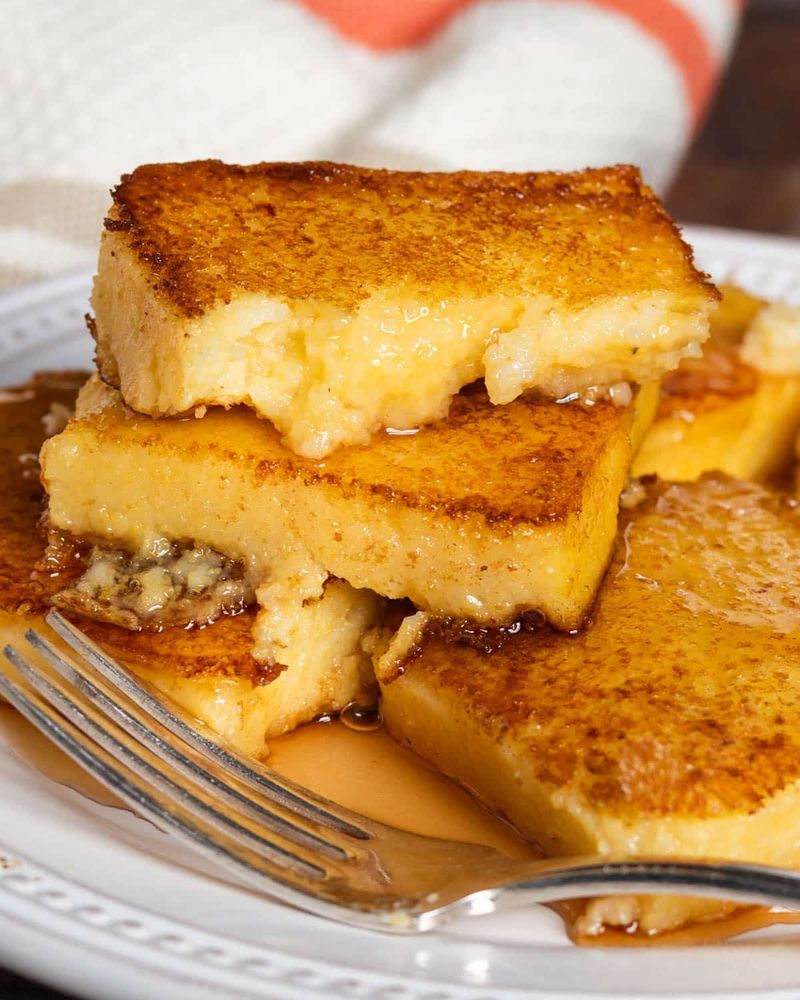
Smart cooks never threw away leftover cornmeal porridge because they knew it could become tomorrow’s breakfast treasure. After chilling overnight, the thick mush would firm up perfectly for slicing into neat rectangles.
These slices got fried in bacon grease or butter until they developed a beautiful golden crust while staying creamy inside. The contrast between the crispy exterior and soft center made this humble dish surprisingly satisfying.
Drizzled with maple syrup, molasses, or even honey, fried cornmeal mush provided the energy needed for farm work while using ingredients that cost almost nothing.
5. Hominy Grits with Red-Eye Gravy

Southern breakfast tables weren’t complete without a bowl of creamy hominy grits paired with the mysterious-sounding red-eye gravy. This wasn’t your ordinary gravy – it was made from ham drippings mixed with strong black coffee, creating a thin, flavorful sauce.
The hominy grits, made from specially treated corn kernels, had a unique texture and mild flavor that soaked up the coffee-infused gravy beautifully. This combination provided both comfort and caffeine to start the day right.
Legend says the gravy got its name from the red “eye” that appeared when coffee was added to the hot ham fat in the pan.
6. Prune Whip

Before fiber supplements existed, families relied on prune whip to keep everyone’s digestion running smoothly. This surprisingly elegant breakfast combined pureed prunes with whipped egg whites and sugar, creating a light, mousse-like texture that was both nutritious and delicious.
The preparation required some skill – the egg whites had to be beaten to perfect peaks and folded gently into the prune mixture. When done correctly, the result was airy and sweet, almost like eating a healthy dessert for breakfast.
Many households served this as a special Sunday morning treat, proving that health food could actually taste good.
7. Liver and Onions
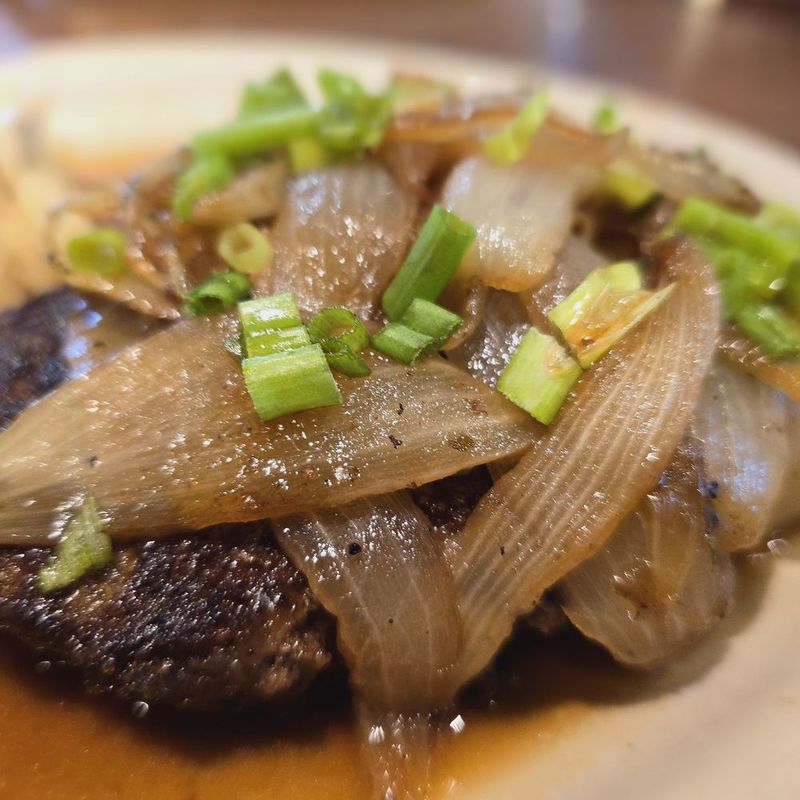
Modern breakfast eaters might be shocked to learn that liver and onions was once a popular morning meal, valued for its incredible iron content and protein power. Families, especially those with growing children or pregnant mothers, considered this dish essential nutrition.
The liver would be sliced thin and quickly seared with sweet, caramelized onions to create a savory, satisfying start to the day. When cooked properly, the liver stayed tender and the onions added natural sweetness that balanced the strong flavor.
Though it has largely disappeared from breakfast menus, this dish represented practical nutrition knowledge that prioritized health over convenience or modern taste preferences.
8. Oatmeal with Lard or Bacon Fat

Long before instant oatmeal packets loaded with sugar, families prepared their morning oats with savory additions that provided serious staying power. A spoonful of lard or bacon fat stirred into hot oatmeal created a rich, satisfying meal that could fuel hours of physical labor.
This wasn’t considered strange or unhealthy – it was practical nutrition that provided the calories and energy needed for farm work, factory jobs, or other demanding physical activities. The fat made the oatmeal creamy and filling.
Salt and pepper were common seasonings, making this breakfast taste more like a savory porridge than the sweet breakfast cereal we know today.
9. Fried Apples and Pork
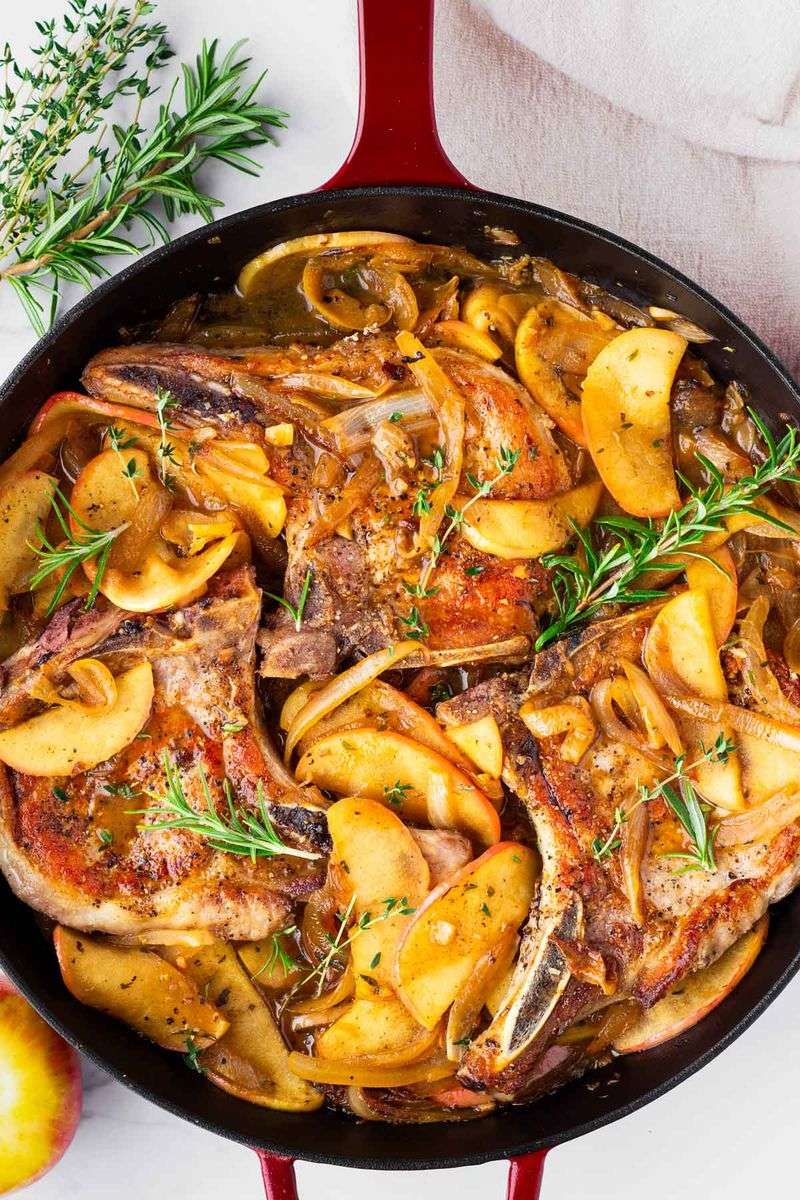
Autumn mornings brought the delightful combination of fresh apples fried in pork fat, creating a sweet and savory breakfast that celebrated the season’s bounty. The apples would caramelize beautifully in the rendered fat, developing deep flavors and tender texture.
Often served alongside sausage or bacon, this dish provided the perfect balance of fruit and protein. The natural sugars in the apples would concentrate during cooking, creating a syrup-like sauce that complemented the salty pork perfectly.
Families with apple orchards made this dish regularly during harvest season, using varieties that held their shape when cooked and provided natural sweetness without added sugar.
10. Corn Dodgers

Farmworkers needed portable, filling food that could travel to the fields, and corn dodgers fit the bill perfectly. These dense, small cornmeal cakes were fried in grease until crispy outside but remained substantial and satisfying inside.
Unlike fluffy cornbread, corn dodgers were intentionally compact and sturdy, designed to hold up in a lunch pail or coat pocket. They could be eaten plain or with molasses, honey, or even wrapped around a piece of bacon.
The name “dodgers” likely came from their small, round shape that resembled something you might dodge or toss. These practical breakfast cakes represented American ingenuity in creating food that worked for real life.
11. Kippered Herring
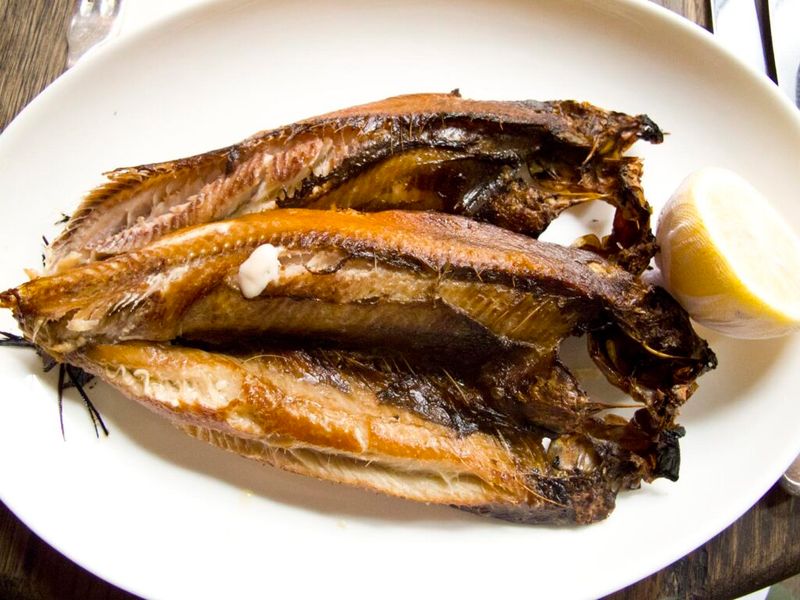
Coastal communities and immigrant families brought the tradition of eating kippered herring for breakfast, valuing this salt-cured, smoked fish for its intense flavor and incredible nutritional value. The smoking process preserved the fish while creating complex, savory tastes.
These protein-packed fish would be served whole or flaked over toast, sometimes accompanied by eggs or fried potatoes. The salty, smoky flavor provided a satisfying start to the day, especially for fishermen and dock workers.
While the strong taste might seem unusual for breakfast today, kippered herring represented centuries of practical food preservation knowledge and provided omega-rich nutrition that sustained hard-working families.
12. Rennet Custard
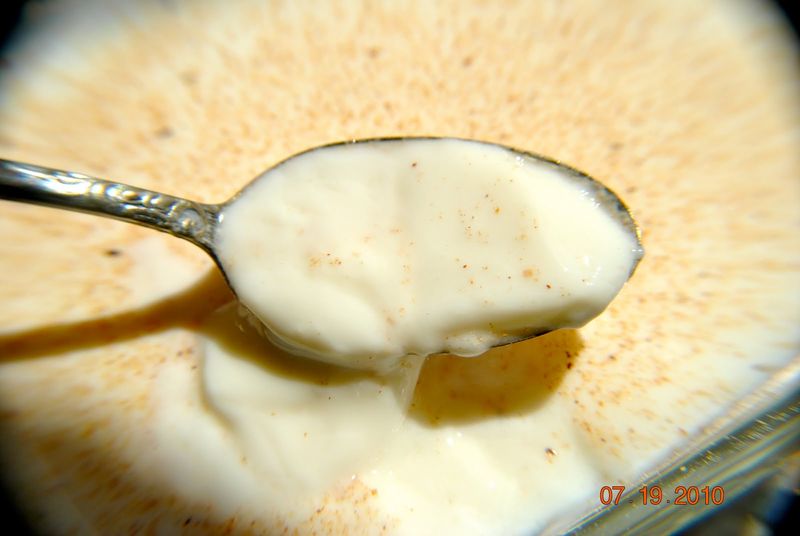
Before gelatin became common, families used rennet to create a delicate, jellied milk custard that served as both breakfast and dessert. This enzyme, traditionally obtained from calf stomach lining, would transform warm milk into a silky, set custard with minimal effort.
The custard would be flavored with vanilla, nutmeg, or even rose water, creating an elegant morning treat that felt special despite using simple ingredients. The texture was lighter than baked custard but richer than regular milk.
Many families considered rennet custard particularly suitable for children, elderly family members, or anyone recovering from illness, as it provided gentle nutrition in an easily digestible form.
13. Fried Brains and Eggs

Before modern food safety concerns changed our eating habits, calf or pig brains scrambled with eggs was considered a delicacy and an excellent source of protein and nutrients. This dish was particularly popular in rural areas where families used every part of the animal.
The brains would be cleaned, soaked, then gently scrambled with beaten eggs, creating a creamy, rich mixture that was surprisingly mild in flavor. Many people described the texture as similar to very soft scrambled eggs with extra richness.
Though this breakfast has virtually disappeared due to health concerns about brain consumption, it represents a time when families wasted nothing and valued organ meats for their nutritional density.
14. Soda Crackers and Milk

When the cupboard was nearly bare but breakfast was still needed, families turned to the simple combination of soda crackers soaked in milk. This economical meal could be prepared in minutes and cost almost nothing, making it a Depression-era staple.
The crackers would soften in the milk, creating a porridge-like consistency that was surprisingly filling. Sugar, raisins, or even a sprinkle of cinnamon could transform this humble meal into something more appealing for children.
While it might seem like poverty food, many people developed genuine affection for this simple breakfast, remembering it fondly as comfort food that represented family resourcefulness during difficult times.
15. Wheatena
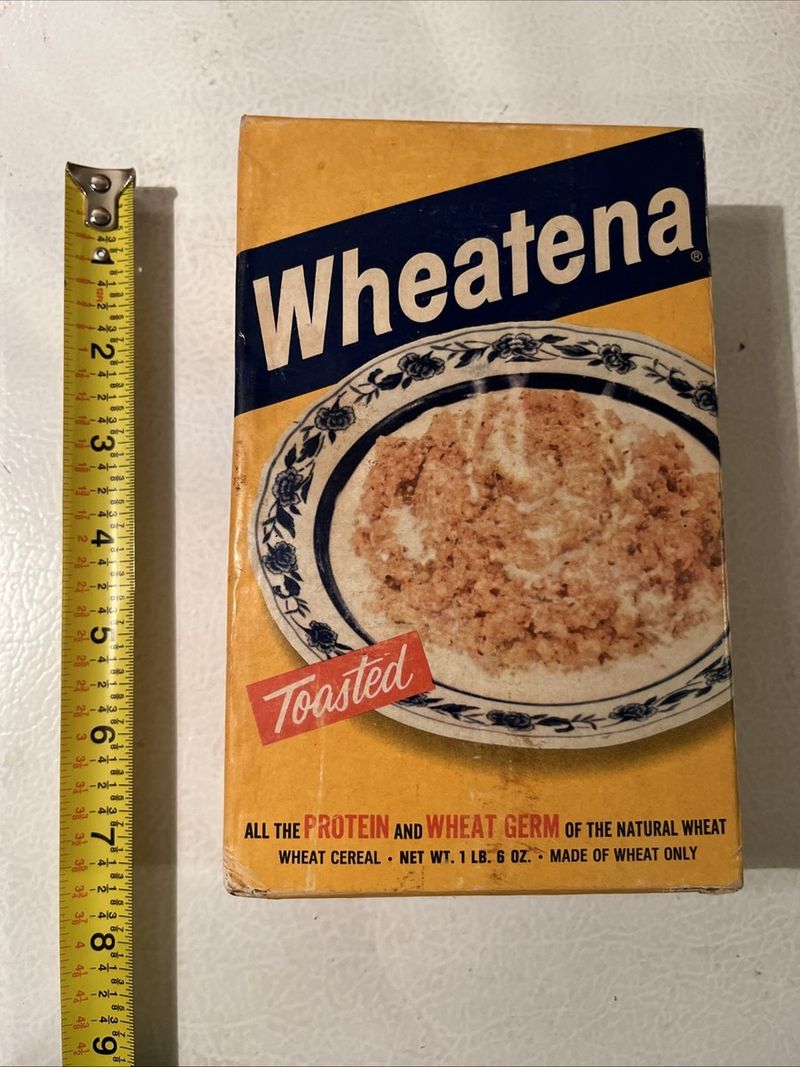
Before Cream of Wheat dominated breakfast tables, Wheatena was the hot wheat cereal that families relied on for nutritious morning meals. This whole wheat cereal required longer cooking than modern instant versions but provided more fiber and nutrients.
The wheat would be boiled with water or milk until it reached a creamy consistency, then served with butter, honey, or maple syrup. The nutty flavor of the whole wheat made it more satisfying than refined cereals that came later.
Many families considered Wheatena essential for growing children and hard-working adults, as it provided sustained energy and important nutrients that helped fuel busy days of physical activity and mental work.
16. Boiled Coffee with Eggshells

Coffee preparation was an art form that involved boiling grounds with water in a pot, often reusing the same grounds multiple times to stretch the expensive commodity. Clever cooks discovered that adding clean eggshells to the pot reduced bitterness and helped clarify the brew.
The calcium in the eggshells neutralized acids in the coffee, creating a smoother, less harsh flavor that was easier on sensitive stomachs. This technique also helped the grounds settle to the bottom of the pot more effectively.
Families would make a large pot in the morning and keep it warm on the stove throughout the day, adding to it as needed and making every precious coffee bean count during lean times.



